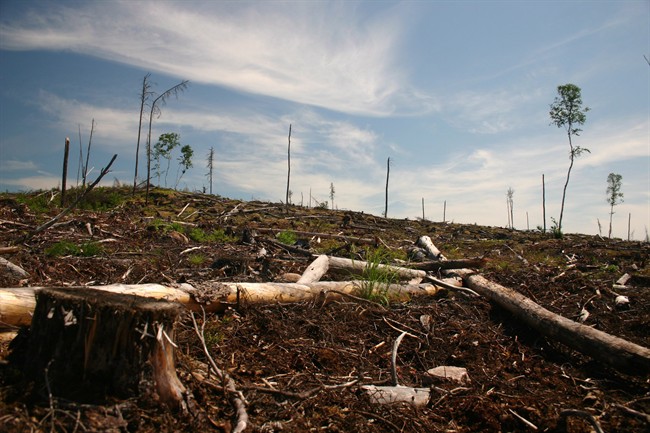OTTAWA – The Supreme Court of Canada has ruled the Ontario government does not need Ottawa’s permission to permit industrial logging on a First Nation’s traditional lands.

While Friday’s unanimous 7-0 ruling may go down as a defeat for the Grassy Narrows First Nation, it does answer an important legal question: can the province can act alone to take up treaty land for forestry and mining?
Yes, it can.

“I agree with the Ontario Court of Appeal that Ontario and only Ontario has the power to take up lands under Treaty 3,” Chief Justice Beverley McLachlin wrote in the decision.
Grassy Narrows appealed after Ontario’s highest court ruled in March 2013 that the province has the right to take up treaty land for forestry and mining.
Only Ottawa has the power to take up the land, argued the First Nation, because treaty promises were made with the federal Crown.
The Supreme Court rejected that argument.
“The promises made in Treaty 3 were promises of the Crown, not those of Canada,” McLachlin wrote.
Both levels of government are responsible for fulfilling those promises under the Constitution, she said.
“Thus, when the lands covered by the treaty were determined to belong to the province of Ontario, the province became responsible for their governance with respect to matters falling under its jurisdiction … subject to the terms of the treaty,” McLachlin wrote.
“It follows that the province is entitled to take up lands under the treaty for forestry purposes.”
Grassy Narrows Chief Roger Fobister said his First Nation will keep fighting to protect its people and land.
“While we hoped the Supreme Court of Canada would respect our treaty, we are determined to see Treaty 3 respected,” he said in a statement.
“We expect the government of Ontario and Canada to learn from the last ten years and come to the table ready to deal with the real needs of our people which requires ensuring a sustainable future both environmentally and economically.”
Grassy Narrows is a tiny community from northwestern Ontario that has spent more than a decade in court fighting the province’s decision to issue a licence for clearcut operations in parts of the Keewatin portion of Treaty 3 territory.
The First Nation says scientific studies indicate that clearcut logging in boreal watersheds raises mercury levels in fish above the Health Canada limit for safe human consumption.
It says recent clearcut logging in Grassy Narrows territory has exacerbated the impact of mercury poisoning that began when a paper mill upstream in Dryden, Ont., dumped mercury between 1962 and 1970.
Dominique Nouvet, who specializes in aboriginal law at the Victoria firm Woodward & Company, called it shocking that the federal government that signed the numbered treaties with aboriginals is not responsible for honouring those promises.
“That’s the message this treaty sends: if the provinces own the land, it’s their job to manage the treaty rights,” she said in an interview.
“And the provinces are not currently doing that, especially Alberta.”
Provinces have trampling aboriginal treaty rights, she added.
“The provinces have been seriously encroaching on treaty harvesting rights of many First Nations, to the point of extinguishment or near-extinguishment,” Nouvet said.
“There are many traditional aboriginal cultures, especially in Alberta, that are on the brink of survival.”
The Grassy Narrows ruling comes on the heels of a historic judgment in the Tsilhqot’in case in British Columbia that changed the way governments must deal with First Nations over land where aboriginal title is claimed.
This case is different from Tsilhqot’in because it involves treaty land and not aboriginal title.
But Nouvet sees similarities in the way the Supreme Court treated the two cases.
“I think they’re very consistent judgments in that the court is affirming the right of the province to be the decision-maker on provincial lands,” she said.



Comments